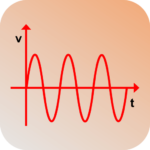Lighting Calculations APK 5.3.1 for android
Description
App Information
Lighting Calculations APK – Important for those who need to precisely calculate the illumination conditions in a climate. With this program’s graphs and calculations, lighting engineers no longer need to keep secrets.
What is Lighting Calculations?
Lighting calculations are used to establish the proper quantity of light needed in a room or region and to guarantee that the lighting system is energy efficient and achieves the specified illuminance levels. Following are some basic illumination calculations:
- Luminous flux: Luminous flux, which is measured in lumens, is the amount of light that a light source gives off as a whole.
- Illuminance: The quantity of light that reaches a surface is called its “illuminance,” and it is measured in units of lux (lx). To figure it out, you have to divide the total amount of light by the total surface area.
- Light Output Ratio: Light Output Ratio (LOR) is the ratio of a luminaire’s total light output to the total light output of the lamps it includes, and it is used to determine how efficient a lighting system is.
- Coefficient of Utilisation: The coefficient of utilisation (CU) is a measure of the efficacy of a lighting system in delivering light to the intended surface and is the ratio of the light that falls on the surface to the light output by the lamps.
- Uniformity Ratio: The uniformity ratio (UR) is the measure of the evenness of the illumination in a place and is derived by dividing the lowest illuminance by the average illuminance.
- Glare: Glare is the discomfort caused by too much brightness, and a glare index (GI) can be used to measure it.
- Colour Rendering Index: The Colour Rendering Index (CRI) is a scale from 0 to 100 that measures how precisely a light source can reproduce colours. Higher values indicate better colour rendering.
These calculations are important for making lighting systems that not only give enough light for the space’s intended use but also save energy without hurting the eyes.
Crucial calculations:
Determination of a full transition, Number of light bulbs, Superbly astute assessment of sufficiency, Codes for different fluorescent tubes, Treatment based on reducing the influence of a powerful The light metre, Strip-driven equipment power source, Glossary: superficial illumination, eco-friendly lighting, Safety of photosynthesis powered, authority granted explicitly.
Changes:
Converting between Lumens and Lux, Lux and Lumens, Watts and Lumens, Lux and Watts, Watts and Lux, Candela and Lumens, Candela and Lux, Lux and Foot-Candle, and so forth. Study the dynamics of force: Kelvin to RGB, RGB to HEX, RGB to CMYK, Luminance to Openness Esteem, Openness Esteem to Luminance, Illuminance to Openness Esteem, Openness Esteem to Illuminance, Luminance converter, Illuminance converter.
Assets:
Interior lighting requirements, Aspects of illumination, Light fixtures, Forming a bulb, Tubes that glow in the dark, Tables for 220V power factor correction that are not mutually exclusive, Table of dazzling success, Intensity range, In the Kruithof, Wide Scope, Normal Drove Characteristics, Standard Model Drove, Evaluation Unit, Pictures Upgraded EU Energy Rating, Glare Rating, and Variety Delivery Performance combined into one record.
Conclusion
Lighting calculations are important tools for planning and putting in place good lighting solutions in a wide range of settings. They contribute to the lighting system’s ability to provide enough illumination, save energy, and offer occupants pleasant lighting conditions. These calculations take into account factors like luminous flux, illuminance, light output ratio, coefficient of usage, uniformity ratio, glare, and colour rendering index. Designers and engineers may use these calculations to create lighting systems that are efficient in terms of both energy usage and user comfort in the dark.
Was this helpful?
Images
Video
What's new
v5.3.2
* Fix: Minor bug fix
Versions
| Version | Size | Requirements | Date |
|---|---|---|---|
| 5.4.4 | 9.9 MB | 5.0 | 28/02/2023 |
Applied Patches
➠ Applied patches:
- Pro / Paid features unlocked - no additional key required;
- Disabled / Removed unwanted Permissions + Receivers + Providers + Services;
- Optimized and zipaligned graphics and cleaned resources for fast load;
- Ads Permissions / Services / Providers removed from Android.manifest;
- Ads links removed and invokes methods nullified;
- Ads layouts visibility disabled;
- Google Play Store install package check disabled;
- Debug code removed;
- Remove default .source tags name of the corresponding java files;
- Analytics / Crashlytics / Firebase disabled;
- AOSP compatible mode;
- Languages: Full Multi Languages;
- CPUs: arm64-v8a;
- Screen DPIs: 160dpi, 240dpi, 320dpi, 480dpi, 640dpi;
- Original package signature changed;



















